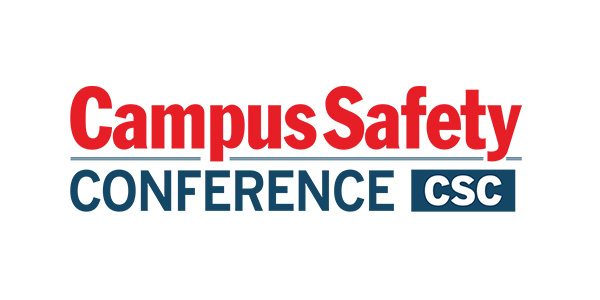The university suffered a student death at an orientation program. The Vice President for Student Affairs came to me and said we did not handle the situation well and to find a better way to handle such situations in the future. That conversation occurred 30 years ago when emergency plans and crisis teams were not common on college campuses. The plans and processes that did exist focused solely on emergency responders’ roles during a fire, explosion, or chemical hazard.
We searched for best practices in addressing the human elements of crisis response -– meeting the needs of those directly affected by the situation, their friends, and their families. We talked to colleagues who had experienced a major crisis and gathered information on their response. We discovered that the University of Florida had created a crisis response team in the Division of Student Affairs following a series of murders in Gainesville in 1990. We adapted the model and created a critical incident response team to work with the police and emergency responders at the university and in the community when crises affected students.
Over the next five years, we would respond to numerous crises involving students, including traffic accidents, apartment fires, lab explosions, plane crashes, and a campus tragedy involving 12 student deaths and more than 25 students admitted to hospitals with injuries.
Virginia Tech, Northern Illinois Shootings Catalysts for Campus Crisis Response Planning
The tragic shootings at Virginia Tech University in 2007 and Northern Illinois University in 2008 caused states to enact expectations for crisis response on college and university campuses, including the development of all-hazard emergency plans, and the creation of crisis response teams and threat assessment/behavioral intervention teams. Institutions that had emergency plans revised them to address new realities. Larger institutions began hiring emergency managers to coordinate campus crisis planning, training, and response. Crisis management has continued to evolve since that time, and we continue to learn new ways to improve what we can do to prevent crises, respond to crises, and return to normal operations with minimal impact to the institution and people.
I have been fortunate to have worked at institutions that valued crisis preparation and response, produced emergency plans and practiced those plans, and responded to crises with compassion, understanding that crises create hardships for those directly impacted, those who experience secondary effects, and those responding to a crisis. I have witnessed the evolution of crisis management in higher education as plans and practices have become more sophisticated, as colleges and universities have added emergency managers to their staff, as administrators engage in training, and as colleges and universities actively participate with community emergency response agencies in planning and training.
I also have observed that some institutions and administrators fail to understand that a crisis will affect their campuses and do not invest the time and effort to plan and train for crises.
According to David Post (2024), Vice President for Academic Affairs and Dean of Faculty at Yale University NUS College, “One of the most pressing challenges facing senior administrators in higher education is how to lead through crisis.” Post goes on to say that “competency in crisis management is undervalued” when hiring senior administrators.
As I reflect on my time as a university administrator dealing with campus crises, I continue to be drawn back to my days as an Eagle Scout. During those formative years, I learned the importance of the Boy Scout Motto, “Be Prepared.” Colleges and universities need to follow this motto by preparing for the crises that will affect their campuses.
To help, I have identified 10 key aspects of crisis management in higher education. I am sure others will have a different list but to me, if a college or university would accomplish these 10 key aspects of crisis management, they would be adequately prepared for a crisis that will strike their campus.
1. Assess Threats and Hazards
Preparation begins with an assessment of institutional capabilities to address threats and hazards likely to affect the campus. The institution needs to take an honest look at its crisis response capabilities. If capabilities do not currently exist, should they be developed within the institution or should they be outsourced? What threats and hazards have plagued the campus in the past? Given what occurs on other campuses and in the community, what threats and hazards might occur in the future?
2. Have a Plan and Work the Plan
When a crisis occurs, it is too late to develop a plan. Develop and test a multi-hazard emergency operations plan that is tailored for your campus. The plan needs to be comprehensive but simple enough to implement with the resources available.
Do not leave the plan sitting on a shelf. Practice the plan regularly. Update the plan based on what was learned in those practice sessions, what was learned from response to a crisis, and new best practices.
Develop plans that complement the emergency operations plan with more detailed information regarding specific crises identified in the assessment of threats and hazards. Such plans might include a weather hazard plan, a violence prevention plan, a crisis communications plan, a business continuity plan, and a threat assessment/behavioral intervention plan.
3. Engage the Right People in Crisis Response
Develop a crisis response team that is trained and capable of responding to crises on your campus. The membership and size of the crisis response team will depend upon the size and complexity of your campus. There are three factors to consider when determining who serves on the crisis team:
- Identify the persons with the knowledge and expertise in key areas of campus operations that will be engaged in responding to a crisis.
- Ensure those identified have the authority to make decisions in these key areas during a crisis.
- Assess whether these individuals have the temperament to serve on a crisis team. By temperament, we mean how they respond under stress, their ability to work with others, and their commitment to making proper decisions that benefit the institution. If not, replace them with someone who does.
4. Keep a Focus on the Goal of Returning to Normal
It is not about me or my department. The goal must be to help the campus and those affected by the crisis return to normal as quickly as possible without causing further harm. It means sharing resources across departments and divisions. It means being deliberate in decision-making and ensuring everyone is on the same page. There also needs to be an understanding that everything will not go as planned and adjustments will need to be made.
5. Verify Accuracy of Information Before Acting On It
Crises develop chaos. Everyone is clamoring for information and the initial information you receive is likely incomplete. Before you release information to the public, you must be certain it is accurate. The last thing you want to do is make a public statement that you later retract because it was grossly inaccurate. That said, you cannot suffer from decision paralysis. You make the best decisions you can based on the information available using the knowledge and expertise of those in crisis leadership roles.
6. Develop Relationships Before a Crisis Occurs
Both internal and external relationships with the campus will determine how smoothly the response to a crisis occurs. Members of the crisis response team need to understand each other’s roles and how they can help each other in a crisis. Members need to know they can speak honestly and trust that other team members have their backs. The leader of the crisis team needs to have regular communications with and support from institutional leadership. In addition, crisis team members should have working relationships with counterparts in the community who can assist during a crisis.
7. Understand That Crises Are Emotional Events and Act Accordingly
Those engaged in crisis response tend to be rational thinkers who act in pragmatic ways. Such attributes are valued in crisis response. However, you cannot forget the emotional response to a crisis that many are feeling. People need to know that you are hearing their fears and concerns and that you are addressing those issues as well.
8. Do Not Be Afraid to “Sin Bravely”
A colleague coined the phrase “sinning bravely” to describe the situations we often found ourselves in when responding to a crisis. Neither the emergency plan nor our training specifically described the existing situation. We needed to make a decision based on our knowledge and experience and act on it now. Such decisions were often ethical decisions involving students and families directly affected by a crisis. We had to trust that we knew “the right thing” to do in that case and that our supervisor would support our decisions.
9. Take Care of Yourself and Other Responders
During a crisis, you tend to put aside taking care of yourself. You focus on what is happening, forget to eat properly and drink fluids, fail to take rest breaks, and do not get enough sleep. If the crisis is of short duration, you may be OK. Some crises continue for days and weeks and you will need to pace yourself.
You must also recognize the emotional strain of responding to a crisis on yourself, your colleagues, and your family. Find time to address the emotional strains. Seek help if you are struggling with the emotions of responding to a crisis.
10. Learn from Experiences
Crises are great learning opportunities. Following a crisis, dissect what occurred and how the institution responded. Make improvements to your plans and processes based on what was learned.
*Post, D.M. (2024, March 3). A guide to crisis leadership: Four lessons for deans, provosts, and presidents on how to manage a crisis, whether its origins are internal or external, The Chronicle of Higher Education.
Note: The views expressed by guest bloggers and contributors are those of the authors and do not necessarily represent the views of, and should not be attributed to, Campus Safety.
Dr. Brent Paterson is the president of Prepared Campus Consulting, established in 2022 to help colleges and universities be prepared whether it is the daily critical incident, the occasional crisis, or the career-defining disaster.
Dr. Paterson served in a variety of roles in Student Affairs (administration, housing, student conduct) including serving as a dean of students, associate vice president, and vice president. He also served as Assistant to the President/Chief of Staff. He is co-author of Crisis Management: Responding from the Heart, and contributing author in Campus Crisis Management: A Comprehensive Guide to Planning, Prevention, Response, and Recovery (First Edition), and Enough Is Enough: A Student Affairs Perspective on Preparedness and Response to a Campus Shooting. Brent is co-author of a research study that examined the impact on university leaders and responders twenty years after a crisis (“Reflections from Crisis: A Phenomenological Study of the Texas A&M Bonfire Collapse” published in the NASPA Journal).













